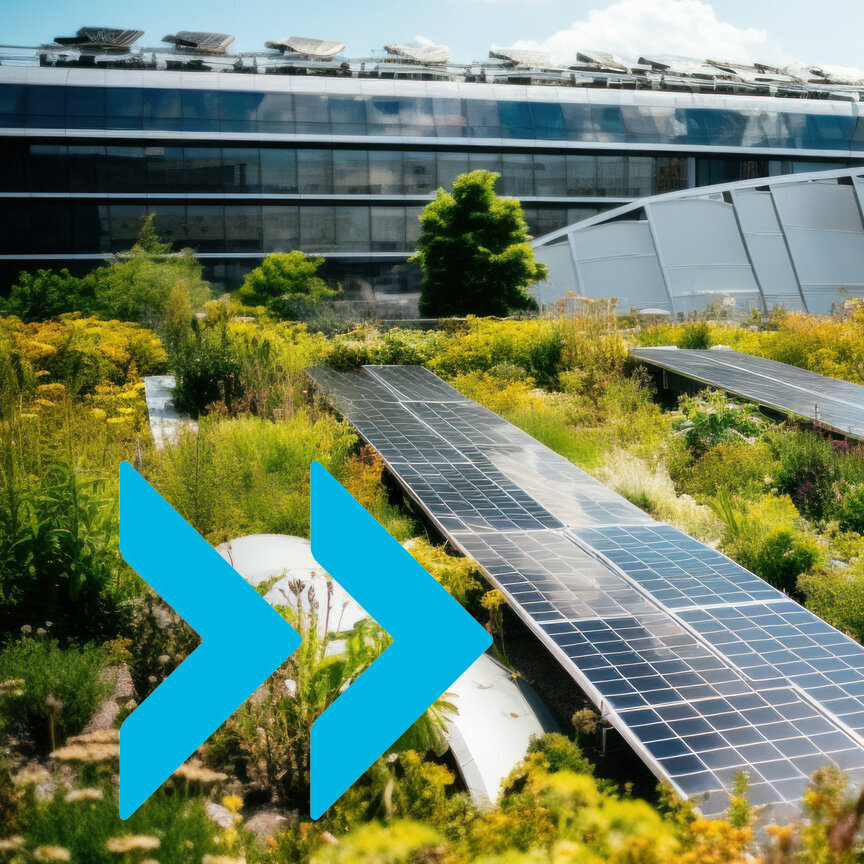- News
- Fact check
Does a building have to be green(er) to be sustainable?
Not necessarily, because sustainability means more than just green façades: Energy efficiency, resource conservation, environmentally friendly materials and social responsibility. However, greening certainly contributes to sustainability. When designing sustainable buildings, it is crucial to optimally plan and implement the multiple use of the building envelope. On roof surfaces, a combination of greening, gray water treatment, rainwater harvesting or photovoltaic systems can create optimal synergies:
- Energy savings through positive effects against heat and cold.
- Increased efficiency: The cooling effect can increase the efficiency of PV modules - better than conventional bitumen, gravel or sheet metal roofs.
- Protection of the roof waterproofing and longer service life of the roof.

So buildings do not have to be completely green to be sustainable. Rather, a well thought-out combination of different technologies is crucial in order to benefit from the numerous sustainable advantages. However, it is not only the building itself that benefits from greening, but also the surrounding area:
- New habitats: the combination of green roofs and PV creates a species-rich habitat for flora and fauna by partially shading the green roof = promoting biodiversity.
- Improvement of the microclimate - a kind of natural air conditioning for the city.
- Reduction of heat islands, which can lower the perceived temperature.
- Relief of the sewer system during heavy rainfall through retention roofs.
Green buildings therefore help to increase their own efficiency and also promote a sustainable environment.